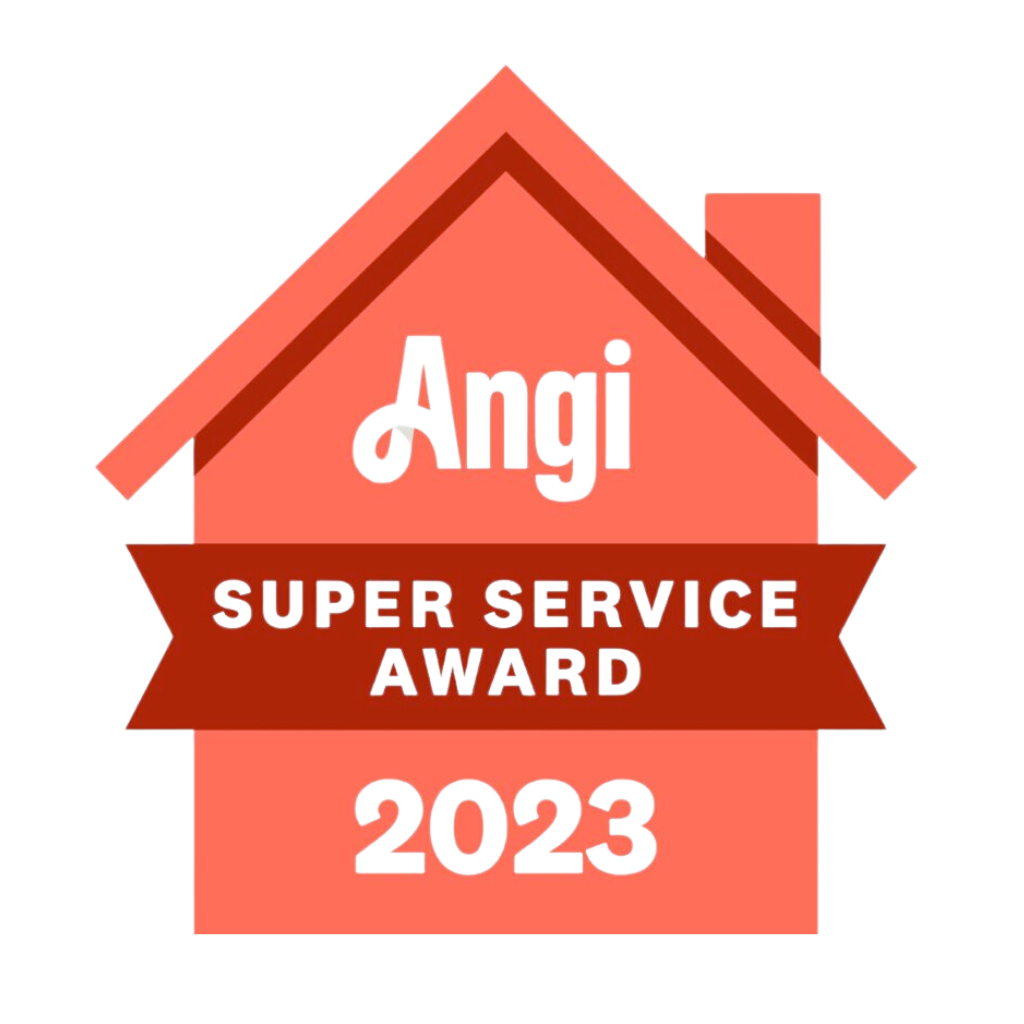If your air conditioning unit has seen better days, replacing it with a new energy-efficient model can keep your home comfortable and save money on future cooling bills. However, budgeting for a new system can be tricky, with many interplaying factors affecting final costs. The following sections will explore the key considerations impacting the costs so you know what to expect in your particular situation when budgeting for a new air conditioner.
Air Conditioner Cost Overview
When it comes to cooling systems, many factors beyond simply the AC unit price impact the final installed price for a new system. Getting a realistic handle upfront on today’s cost range when budgeting for a brand new, professionally installed air conditioning system proves tricky—market rates can run the gamut up, depending on all those variables in play. But while precise predictive pricing remains difficult, taking a deeper look at efficiency ratings, output size, installation actors, and equipment components helps set proper expectations.
Why Invest in Effective Cooling?
Staying cool in your home goes beyond just comfort levels—having adequate air conditioning also greatly impacts health and household affordability. There are a number of key benefits provided by maintaining properly working cooling systems:
- Preventing Overheating: Excessive heat can cause breathing issues, dehydration, and swelling and worsen existing medical conditions for at-risk individuals like young children and the elderly. Reliable AC protects vulnerable family members.
- Lowering Humidity: Humid air can lead to sinus issues and respiratory illness. Effective cooling technology reduces moisture.
- Cleaner Indoor Air Quality: Air conditioners with quality filters keep outdoor allergens like pollen at bay while capturing pollutants and preventing them from endlessly recirculating through your home’s air.
- Greater Energy Efficiency: Upgrading dated or failing AC systems to modern, energy-efficient models can create significant savings on energy bills each month by not running as often to maintain desired temperatures.
Replacing an aging or insufficient air conditioning unit also provides the perfect opportunity to correct any existing humidity, allergen, or cost issues at the same time—transforming previously uncomfortable spaces into pleasant indoor environments your family looks forward to spending time in.
Evaluating Air Conditioner Types and Capacity
With such extreme variability in air conditioner pricing and options, determining the best system type and properly sized capacity for your home proves crucial in defining realistic budget expectations. Getting these key foundational considerations right also prevents spending more than necessary upfront for features that will go unused while ensuring the system operates efficiently for years to come.
Several key factors surrounding the type of cooling system and appropriate capacity play into overall costs:
- Window vs. Central AC Units: Window AC units can effectively cool single rooms and are a more affordable option. Whole-home central air conditioners utilize ductwork to distribute conditioned air, allowing zoned climate control across multiple areas, albeit at a higher initial price.
- Ductless Split Systems: Ductless split AC systems provide centralized cooling across multiple areas without requiring ductwork installation by using an outdoor condenser and multiple indoor evaporator units.
- BTUs and Tonnage: The required cooling capacity depends on variables like the home’s square footage, number of floors, insulation levels, window area, typical occupancy and crowds, and regional climate. Incorrect sizing wastes money in the long term through inefficient operation.
- Single vs. Multi-Zone Systems: Multi-zone central air conditioners use advanced controls and dampers to enable custom cooling temperatures for separate zones like basement vs. upstairs. However, the additional complexity comes with diminishing returns in efficiency and comfort on larger homes.
Obtaining professional load calculations from an experienced HVAC contractor for your specific scenario determines the optimal central air conditioner system type, sizing, and zones for the best balance of comfort and energy efficiency. This precision sizing prevents spending more than necessary upfront while maximizing savings over time.
Efficiency and Feature Considerations for Air Conditioning Systems
When evaluating new air conditioning systems, energy efficiency ratings, and advanced features often get overlooked. However, these factors are incredibly vital in impacting long-term costs and overall owner satisfaction. Investing a bit more upfront in key areas like performance and smart capabilities can pay dividends through superior climate control, money savings, and reduced headaches for years on end.
Several efficiency and feature considerations factor into air conditioning system costs and long-term value:
- SEER Ratings: The Seasonal Energy Efficiency Ratio measures how effectively an air conditioning system converts electricity into cooling over an entire season. While a minimum rating of 15 SEER is common today, upgrading to systems rated 17 SEER or greater substantially reduces energy expenditures over years of ownership through improved operation. Read our guide about what SEER means in air conditioning, for more information.
- Smart Technology Features: Many modern air conditioning systems offer conveniences like WiFi-connected smart thermostats for scheduling and control from your phone, automation through smart home platforms, and remote technical monitoring capabilities. While these cutting-edge features raise equipment purchase prices, they provide greatly improved comfort, efficiency, and peace of mind.
- Incentives for Efficiency: Various rebates, tax credits, and incentive programs are available for homeowners transitioning to more efficient, ENERGY STAR-certified air conditioning equipment, providing noteworthy lifetime savings.
When evaluating advanced efficiency levels and technology features for air conditioning systems, the key is weighing whether long-term energy savings and enhanced control offset any higher initial investment. Calculating total cost over the full ownership period determines true value.
Installation Process and Site Details
The installation process and evaluation of your home’s specific infrastructure play a crucial role in realizing the full benefits of an air conditioning system. Beyond the cooling equipment itself, proper sizing and seamless integration with existing electrical, ductwork, roof access, and other structural elements keep overall project costs contained.
Key factors influencing installation costs include:
- Existing Infrastructure: Leveraging existing electrical capacity, ductwork layouts, roof access, and more keep installation costs down. Needing major household upgrades quickly raises the total price.
- Physical Site Complexity: Simple, straightforward installs have lower equipment rental, permitting, and labor needs than complex projects requiring creative problem-solving.
- System Sizing: Correct BTU capacity sized to the home affects system efficiency and equipment lifespans. Carefully balance upfront equipment savings against long-term ownership costs.
Thoroughly vetting installer expertise, evaluating on-site infrastructure needs, and planning equipment and permitting logistics are necessary for smooth, cost-effective AC projects.
Air Conditioning Components
The major components making up central air conditioning systems greatly impact both upfront costs and ongoing performance:
- Compressors: The compressor pumps refrigerant through the system to remove heat. Single-stage compressors are the most affordable, while variable-capacity compressors intelligently adjust cooling output based on current conditions for improved efficiency – albeit at a higher upfront cost.
- Coils and Condensers: Copper tubing and aluminum-finned condensers rapidly dissipate heat from the refrigerant vapor, converting it into a liquid. High thermally conductive metals paired with durable unit housing result in reliable cooling, shorter run times, and lower electricity usage.
- Thermostats: Controls range from basic manual options to sophisticated smart thermostats. While basic programmable thermostats maintain set temperature ranges consistently throughout the day, advanced models make incremental adjustments to minimize total operation time while keeping occupants comfortable.
Carefully evaluating and investing where it counts in compressor technology, high-performance coils, and automation controls is vital—a balance that enables finding the optimal tradeoff between new equipment cost and achieving maximum savings over years of ownership.
Additional Expenses to Consider
Beyond the outright costs of the physical air conditioning equipment and professional installation, several other important secondary fees factor into total budgets. Carefully accounting for these often overlooked expenses ensures no sticker shock and gives a complete, accurate financial picture upfront.
- Pre-Installation Repairs: Thoroughly evaluating an aging AC system before replacement prevents avoidable problems down the road after installing the new unit. Any required repairs become more challenging post-installation.
- Air Conditioner Installation: The basic labor and expertise fees for safely installing cooling equipment, integrating with existing home infrastructure, and ensuring proper operation
- Construction Materials: Verify whether refrigerant recharge, flush kits, PVC piping, electrical wiring whips between the air handler and condenser, and mounting hardware are included upfront or represent add-on expenses.
- Financing Options: Payment plans and financing instruments like loans or lease-to-own agreements reduce steep upfront costs. However, factor in total spending over multiple years before committing to ensure affordable terms.
- HVAC Specialist Fees: The expertise and labor costs of qualified HVAC technicians to handle the safe, integrated installation of new air conditioning equipment. Upgrading inadequate electrical panels in older homes to support added central air conditioning load can tack on additional electrician charges.
Staying mindful of these secondary costs improves accuracy in estimating what it truly takes to get cooling systems up and running.
The Logan Difference
As a family-owned, experienced heating and cooling provider in business since 1969, Logan Services A/C, Heat & Plumbing makes all the difference when installing new air conditioning units for homes in Central Ohio and beyond.
Logan Services’ caring culture and commitment to 100% customer satisfaction is what sets them apart—in a trade industry notorious for cutting corners and fast service, the team treats you like family by taking the time to understand your comfort goals, budget realities, and technical complexities to deliver a custom tailored experience from start to finish.
Whether you are interested in central air installation, maintenance, or repair, Logan stands behind their work 100% with dedicated customer service and prompt response times that give homeowners peace of mind. They can expertly handle new cooling equipment, system fault diagnosis, electrical upgrades, permit processes, ductwork, emergency service calls, and seasonal tune-ups to keep existing furnaces and AC units running like new.
For exceptional air conditioning installation and caring expertise, contact us at Logan Services A/C, Heat & Plumbing today to turn your home into an oasis of perfect temperature and air quality.
Frequently Asked Questions
How long should an AC unit last?
The average lifespan for most air conditioning compressors and condensers rounds out to between 10 and 15 years. Though varying based on use, maintenance, and climate exposure, components start failing, and efficiency drops off by then, necessitating full system replacement.
What size central air system do I need?
Central air conditioning size is measured in tons, which refers to the amount of heat the system can remove from your home per hour. The right capacity depends on your home’s size, age, insulation, layout, and typical occupancy. Many homeowners end up with too large or too small systems for ideal comfort and efficiency. Consultation with qualified HVAC professionals ensures properly sized central air.
How can I reduce AC installation costs?
Getting multiple bids, checking for available rebates on efficient models, pre-installing electrical upgrades in older homes, avoiding oversizing equipment, and pairing new central air units with updated insulation, windows, and weather stripping provide various ways to minimize expenses when installing cooling systems.
When should I replace vs repair AC units?
Once systems are over 10 years old and facing major component failures like broken compressors, widespread refrigerant leaks, or dangerous electrical issues, replacement tends to make more economic sense than sinking money into temporary repairs. Newer central air units also utilize safer, eco-friendly refrigerants with better energy efficiency.



















